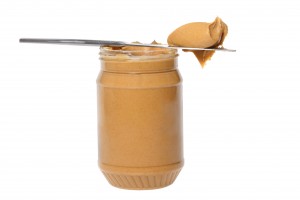People wil l spend hundreds of dollars on a bottle of wine or a few ounces of caviar, but $835 for three six-ounce jars of peanut butter? That’s unheard of! Yet this is the price tag for peanut butter that, by design, has nothing special about it. It’s as plain as peanut butter can be.
l spend hundreds of dollars on a bottle of wine or a few ounces of caviar, but $835 for three six-ounce jars of peanut butter? That’s unheard of! Yet this is the price tag for peanut butter that, by design, has nothing special about it. It’s as plain as peanut butter can be.
The reason this very plain peanut butter is so unique is that it serves as the standard on which all peanut butter is to be measured. This peanut butter isn’t even supposed to be eaten. It’s used for scientific purposes and helps to differentiate various nutritional values between brands and varieties of peanut butter that may look similar, but are different on a molecular level.
Baseline analysis
The National Institute of Standards and Technology (NIST) catalogs this peanut butter as Standard Reference Material No. 2387. Its purpose is to provide a baseline or standard for the nutritional content of peanut butter. The types of protein, amount of fat, copper and zinc are all precisely analyzed and measured. The purpose of this is to provide a standard by which food manufacturers can verify their analysis of similar products and their nutritional contents as accurate.
Material testing
The food industry isn’t the only one that relies on standards to measure and develop products. The need for exacting standards is even more crucial when you move from the grocery shelf to the laboratory. At Polymer Solutions Incorporated, our scientists demand a kind of precision and a reliance on standards that is hard to understand for anyone who has not worked in the scientific or engineering fields.
For example, ICP analysis requires absolute precision because it is used to detect traces of a particular element in such processes as determining the amount of inorganic fillers or detecting heavy metals in bioabsorbable implants.
Inorganic Ventures, which specializes in making custom reference materials for use in ICP standards, calibrates their materials to match the NIST’s specific guidelines for ICP Standard Reference Material. To ensure accuracy, they use two independent methods of analysis, both of which are backed by reliable quality-control standards. Adhering to these standards reduces discrepancies and helps guarantee that measurements made in labs throughout the country are accurate and uniform.
“We live and work in a demanding world. The ability to meet those demands in a laboratory environment is critical,” said Tammy Shepherd of Inorganic Ventures. “To ensure accurate and reliable results that can be used with confidence, the selection of an accredited laboratory as the manufacturer of your analytical standards is essential.”
And that $835 jar of peanut butter we started out with? It may not taste any better (or worse) than the $3 jar you buy at the grocery store, but the value it provides as a standard to guide scientists and manufacturers is far greater than its price tag.
